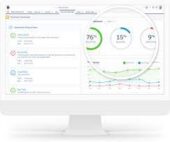Based on a Salesforce study, 51% of marketing leaders measure success with revenue growth. 22% look at customer satisfaction. While only 18% look at customer retention. Customer journey mapping addresses retention, satisfaction, and revenue growth.
Taking a customer-centric approach to designing your customer journey map puts your focus on the customer improving customer satisfaction and retention, in addition to revenue. Your customer journey map coordinates all your marketing efforts.
Maximize the Advantages of Customer Journey Mapping
To maximize the advantages of customer journey mapping, it’s critical to take a comprehensive approach that integrates each of the following steps:
- Gather Customer Data: Accumulate data on customer demographics, needs, preferences, pain points, and objectives related to your product or service. Employ surveys, focus groups, customer service interactions, and analytics to gather this information.
- Create a Customer Journey Map: Utilize the collected data to craft a thorough map of the customer journey, encompassing all touchpoints from initial awareness to post-purchase support.
- Identify Pain Points and Areas for Improvement: Utilize the journey map to pinpoint areas where the customer experience falls short and identify opportunities for enhancement.
- Foster Cross-Departmental Collaboration: Encourage all team members, irrespective of their roles or departments, to comprehend the customer journey and view the customer experience through their respective perspectives. Assign responsibility for crucial touchpoints to specific departments and promote cross-departmental collaboration. Toss around ideas, build off other teams’ thoughts, and share feedback.
- Continually Measure Success: Routinely gauge the impact of your CX program on customer loyalty and retention. Leverage customer feedback and other metrics to assess whether your program is positively influencing the customer experience.
- Involve Customers in the Process: Solicit customer input throughout the journey mapping process to guarantee that the map accurately mirrors their experience.
- Avoid Common Pitfalls: Steer clear of the pitfalls of process mapping, which prioritizes internal processes over the customer experience. Avoid bypassing customer input and ensure the involvement of all teams in the journey mapping process.
Your Customer Journey Map is a Diagram of Touchpoints
The customer journey map becomes a diagram of all the touchpoints a customer has with your company. While every customer’s experience with your company will be slightly, or greatly, different the customer journey map will outline potential journeys and touchpoints. Understanding how, when, and why your customer is interacting with your company is key to improving your customer experiences.
The Salesforce team at Tectonic looks forward to assisting you in implementing your customer journey throughout the entire Salesforce ecosystem.













